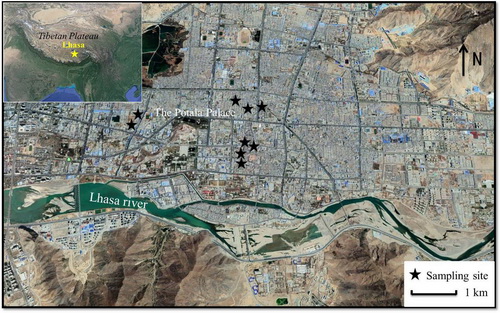Trace Elements in Hair of Cooks Assist to Reveal the Indoor Air Pollution in Lhasa
Updatetime:2019-09-03From:
【Enlarge】【Reduce】
Indoor air pollution caused by cooking and biomass burning has strong association with human health. The latest study indicated that particulate matter and carbon monoxide were generally considered as the direct indicator of indoor air pollution.
However, particulate matter and carbon monoxide cannot reflect the direct influence of the indoor air pollution caused by cooking on the human health status.
Recently, a research group from Northwest Institute of Eco-Environment and Resources (NIEER) of the Chinese Academy of Sciences examined the concentrations of heavy metals in the scalp hair samples of cooks at Lhasa city using inductively coupled plasma-mass spectrometry (ICP-MS).
On the basis of the analysis of trace elements in cooks’ hair, scientists estimated the indoor air pollution in restaurants of Lhasa to reveal the relations between the indoor air pollution and health-related problems.
In addition, concentrations of trace elements were compared with levels in other regions of the world. Besides, scientists also examined the mutual correlations among these heavy metals.
The results showed that concentrations of trace elements were found in the rank order of Zn>Cu>Cr>Pb>As>Cd, with concentrations of Zn and Cu exceeding 10μg/g.
All the elements, especially Cu and Cr concentrations in the hair samples were higher than those of the control, indicating higher indoor air pollution posing higher health risk.
Cu, Cr and Zn concentrations were higher than those of other areas implying that these metals might accumulate in the body and then affect the health of cooks.
This study suggested that human scalp hair could be a useful biomarker to assess the intensity of heavy metals exposure as well as the indoor air pollution to cooks in Tibet.
To our knowledge, this study is one of the very few studies conducted within restaurants on human exposure to heavy elements, which will provide useful data on understanding the health status of these cooks at Lhasa.
The study result was published in SN Applied Sciences.

Map showing the study area and sampling sites at Lhasa (Image by CHEN Pengfei)
Contact:
CHEN Pengfei
E-mail: chenpengfei@lzb.ac.cn
State Key Laboratory of Cryospheric Science, Northwest Institute of Eco-Environment and Resources, Chinese Academy of Sciences, Lanzhou 730000, China
Appendix




